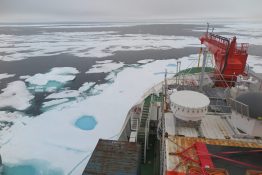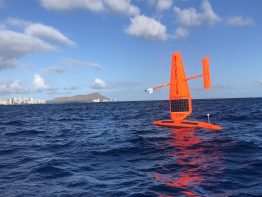The word “conservation” is a common one, and conjures up visions of protected land- and sea-scapes, species being walked back from the brink of extinction and using sustainable approaches to manage precious natural resources. It makes sense that these kinds of images come to mind; they fit the mold of conservation as many of us know it. But what if we thought about conservation in a broader and more inclusive way, acknowledging that humans and ecosystems are inextricably linked?
Read more »Last ice-covered parts of summertime Arctic Ocean vulnerable to climate change
In a rapidly changing Arctic, one area might serve as a refuge — a place that could continue to harbor ice-dependent species when conditions in nearby areas become inhospitable. This region north of Greenland and the islands of the Canadian Arctic Archipelago has been termed the Last Ice Area. But research led by the University of Washington suggests that parts of this area are already showing a decline in summer sea ice.
Read more at UW News »Remotely-piloted sailboats monitor ‘cold pools’ in tropical environments
Conditions in the tropical ocean affect weather patterns worldwide. The most well-known examples are El Niño or La Niña events, but scientists believe other key elements of the tropical climate remain undiscovered. In a study recently published in Geophysical Research Letters, scientists from the University of Washington and NOAA’s Pacific Marine Environmental Laboratory use remotely-piloted sailboats to gather data on cold air pools, or pockets of cooler air that form below tropical storm clouds.
Read more at UW News »



